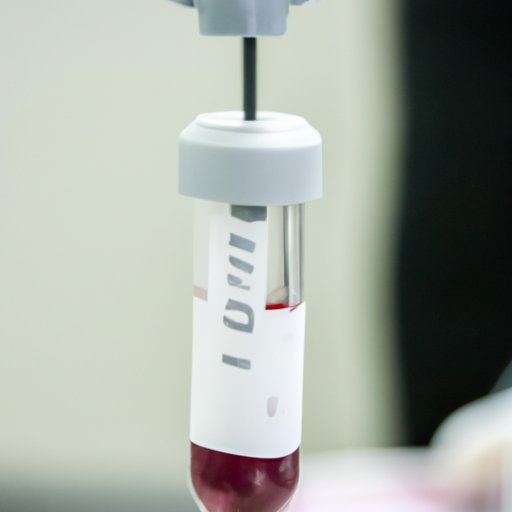
Introduction
Blood transfusions have saved countless lives, but they are not without risk. One of the biggest risks associated with blood transfusions is receiving the wrong blood type. This can have serious and potentially deadly consequences, and it is a critical issue that healthcare providers must take seriously. In this article, we will explore the science behind blood types and the risks associated with receiving the wrong blood type during a transfusion. We will also discuss who is responsible for preventing these errors and how you can protect yourself from this serious medical issue.
What Causes Blood Type Mismatches?
Before we dive into the risks associated with receiving the wrong blood type, it is important to understand the science behind blood types. Blood is classified into different groups based on the presence or absence of certain proteins on the surface of red blood cells. These groups are referred to as blood types, and the most common ones are A, B, AB, and O. Each blood type can be further classified as Rh-positive or Rh-negative.
Matching blood types during a transfusion is crucial because if the recipient receives the wrong blood type, their immune system can attack the foreign blood cells, leading to a potentially deadly reaction. Blood type mismatches can occur for several reasons, including errors in testing, communication breakdowns between healthcare providers, or incorrect documentation of blood type information.
To prevent blood type mismatches, healthcare providers must follow strict protocols during the transfusion process. Before a transfusion, the patient’s blood type is tested to ensure compatibility with the blood being transfused. In addition, healthcare providers must take care to label blood correctly and verify the blood type at every step of the transfusion process.
Can You Die From Getting the Wrong Blood Type?
Receiving the wrong blood type during a transfusion can have serious and potentially deadly consequences. Symptoms of a blood transfusion reaction can range from mild to severe, with potentially life-threatening complications such as kidney failure or severe anemia. In severe cases, a patient may experience hemolysis, a condition in which their body begins to destroy red blood cells. In some cases, this can lead to death.
It is important to note that even with proper testing and protocols in place, blood type mismatches can still occur. This is why it is critical that healthcare providers take every possible precaution to prevent these errors.
Who is Responsible for Preventing Blood Type Mismatches?
While blood type mismatches can be caused by a variety of factors, healthcare providers and institutions play a crucial role in preventing these errors. Medical errors, including blood type mismatches, can occur when healthcare providers fail to follow established protocols or when there is a breakdown in communication between providers.
Hospitals and other healthcare institutions must have policies and procedures in place to prevent medical errors from occurring. This can include proper documentation of patient information, verification of blood type information at every step of the transfusion process, and ongoing education and training to ensure all staff members are knowledgeable about the risks associated with blood transfusions.
Knowing Your Blood Type Could Save Your Life
One of the best ways to protect yourself from the risks associated with blood type mismatches is to know your own blood type. You can find out your blood type by donating blood or having your blood tested by a healthcare professional. It is also a good idea to keep this information handy, especially in the event of an emergency.
Knowing your blood type can be crucial in emergency situations where there is a risk of blood loss or the need for a transfusion. By knowing your blood type, you can alert healthcare providers to any potential issues and help ensure that you receive the correct blood type during a transfusion.
The Emotional Consequences of Blood Type Mismatches
Receiving the wrong blood type during a transfusion can have serious physical consequences, but it can also take an emotional toll. Patients may feel scared, angry, or overwhelmed by the experience, and it can have a lasting impact on their mental health.
It is important for healthcare providers to not only address the physical risks associated with blood transfusions but also provide emotional support to patients who have experienced a blood type mismatch. Patients should feel that their concerns are being heard and that they have access to resources and support to help them cope with the emotional fallout.
Conclusion
Blood transfusions can be life-saving, but they are not without risks. Receiving the wrong blood type during a transfusion can have serious and potentially deadly consequences, which is why it is critical that healthcare providers take every possible precaution to prevent these errors. By understanding the science behind blood types, knowing your own blood type, and advocating for your own health, you can help protect yourself from this critical issue. Remember, receiving the right blood type during a transfusion could mean the difference between life and death.





